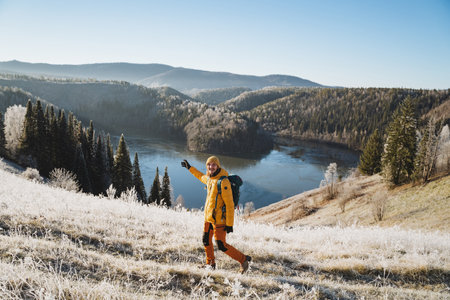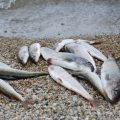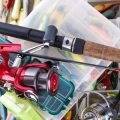1. Choosing the Perfect Camping and Fishing Spot
Planning your weekend escape into the wild starts with finding that ideal spot where you can both camp out under the stars and reel in some great catches. Whether you’re a seasoned weekend warrior or just starting to explore the outdoors, picking the right location can make all the difference in your experience. Here’s how to zero in on the perfect place for your next fishing and camping adventure.
Consider Proximity: How Far Do You Want to Go?
When time is short, location matters. If you’ve only got a weekend, think about how much driving you want to do versus how much time you’d rather spend actually fishing and relaxing. Sometimes, hidden gems are closer than you think—your local state parks or community lakes can offer great fishing without a long road trip.
Quick Comparison: Popular Camping & Fishing Locations
| Type of Spot | Distance from City | Main Features | Best For |
|---|---|---|---|
| State Parks | 30 min – 2 hrs | Restrooms, trails, easy access, stocked lakes | Families, beginners |
| National Forests | 1-3 hrs | Larger lakes, rustic sites, more privacy | Experienced campers, groups |
| Backcountry Lakes | 2+ hrs plus hike-in | No amenities, natural setting, wild fish species | Adventurers, solitude seekers |
| Private Campgrounds | Varies | Amenities like showers, rentals, guided trips | Comfort lovers, first-timers |
Know the Rules: Regulations and Permits Matter
Every spot has its own set of rules. Before you pack up your gear, check if you need a fishing license (most states require one) and whether there are special permits for camping or parking. State park websites and local ranger stations are solid resources. Also look out for catch limits and seasonal closures—they help keep fish populations healthy for everyone.
Fish Species: What’s Biting Where?
If you have a favorite fish to target—like bass, trout, or catfish—it pays to research which lakes or rivers are known for them. Many state wildlife agencies post regular fishing reports online so you can see what’s being caught lately. Chatting with locals at bait shops is also a classic way to get the scoop.
Amenities That Match Your Style
Your idea of “roughing it” might be different from someone else’s. Some folks want flush toilets and picnic tables; others are fine with just a tent pad by a wild shoreline. Decide what comforts matter most before settling on your spot:
| Amenity Type | Description/Examples |
|---|---|
| Barebones (Primitive) | No facilities—just nature and maybe a fire ring. Think remote lakes. |
| Standard (Developed) | Pit toilets, water spigots, picnic tables; common at state parks. |
| Full-Service (Premium) | Showers, electricity hookups, camp stores—usually private or large public campgrounds. |
Pro Tip: Check Online Reviews & Maps!
Crowdsourced apps like AllTrails and Fishbrain let you read reviews from other anglers and campers. Google Maps satellite view is also great for scoping out shoreline access and nearby amenities before you go.
2. Gear Up: Essential Equipment and Packing Tips
When youre heading out for a weekend fishing and camping adventure, the right gear can make or break your trip. Whether you’re casting off at a quiet lakeside or setting up camp deep in the woods, packing smart is key to staying comfortable and ready for anything. Here’s a quick guide to help you gear up like a true weekend warrior.
Must-Have Fishing Gear
Let’s start with the basics. You don’t need to bring your whole garage—just focus on versatile equipment that covers most situations:
| Item | Why You Need It | Packing Tip |
|---|---|---|
| Rod-and-Reel Combo | A medium-action combo is perfect for most freshwater fish in U.S. lakes and rivers. | Choose a collapsible rod to save space. |
| Tackle Box | Packed with assorted hooks, sinkers, bobbers, and lures to match local fish species. | Opt for a small, organized tackle tray. |
| Fishing Line | Extra line (8-12 lb test) covers most scenarios without adding much weight. | Wrap extra line around a pencil to save room. |
| Pliers & Line Cutter | For removing hooks and trimming lines safely and quickly. | Get a multi-tool to combine uses. |
| License & Local Regulations Info | Stay legal and informed wherever you cast your line in the States. | Store digitally on your phone or in a waterproof pouch. |
Camping Essentials for Comfort & Convenience
Your camp setup should be all about ease and efficiency. Here’s what you’ll want to bring along:
| Item | Function | Packing Hack |
|---|---|---|
| Tent & Sleeping Bag | Shelter from the elements and warmth at night. | Packsacks with compression straps save space. |
| Campsite Cooking Setup | A compact stove or grill, lightweight cookware, utensils, and fuel. | Nesting pots and pans cut down bulk—think “backpacking style.” |
| Headlamp or Flashlight | Lets you bait hooks or find gear after dark hands-free. | Bring extra batteries or go rechargeable with a portable charger. |
| Water Filtration System | Makes local water safe to drink anywhere in the wild. | Squeeze filters or iodine tablets are ultralight options. |
| First Aid Kit & Bug Spray | Treat minor injuries and keep pests at bay. | Make your own mini kit with basics in a resealable baggie. |
| Food & Snacks | No one wants to fish on an empty stomach! Trail mix, jerky, oatmeal, and easy-to-cook meals are winners. | Pre-portion meals into individual bags to save time and space. |
| Pro Tip: Always double-check the weather forecast before packing clothing layers! | ||
Packing Smarter, Not Harder
The goal is to keep your pack light but complete. Lay out everything before you pack—if it doesn’t serve more than one purpose, consider leaving it behind. Use stuff sacks or zippered pouches to organize by category (fishing, cooking, sleeping), so you spend less time digging for gear when you’d rather be catching dinner. And remember: what goes in must come out, so bring trash bags for all your waste.
The Weekend Warrior’s Quick Checklist:
- Packing cubes or stuff sacks: Organize gear by activity
- Ziploc bags: Keep electronics dry
- Duct tape mini-roll: Instant fixes for almost anything
- Lighter/matches: Fire-starting made simple
- Sunscreen & sunglasses: Protect yourself from sunburn while on the water
- Camp chair or folding stool: For those well-earned breaks
- Pick Your Spot: Look for areas with structure like rocks, fallen trees, or weed beds where fish like to hide.
- Use Light Tackle: Lighter rods and reels give better sensitivity and longer casts from shore.
- Bait Choices: Worms, minnows, or artificial lures work great depending on what’s biting in local waters.
- Troll Slowly: Move at a slow speed while dragging lures behind to cover more water and find active fish.
- Anchor Near Structure: Drop anchor by submerged logs or rocky points where fish gather.
- Keep Quiet: Fish can be spooked by loud noises. Move quietly and avoid sudden movements in the boat.
- Muddy Water: Use brightly colored lures or bait with strong scents so fish can find them easily.
- Clear Water: Go for more natural colors and lighter lines for a stealthy approach.
- Windy Days: Cast with the wind for longer distances and focus on areas where wind pushes baitfish toward shorelines.
- Cold Fronts: Fish tend to go deeper and become less active—try slow presentations near the bottom.
- A variety of hooks, sinkers, and bobbers
- Lures for different species (see table above)
- A reliable rod and reel combo suited for your main target fish
- A sturdy tackle box and fishing license (check state regulations!)
- Sunscreen, bug spray, snacks, and plenty of water for comfort during long hours outdoors
- Gut the Fish: Lay the fish on its side. Insert your knife into the belly near the tail and carefully slice up toward the head.
- Remove the Guts: Open up the cavity and pull out all the insides. Rinse with clean water from your camp jug or nearby stream (if safe).
- Scale or Skin (Optional): For most freshwater fish, scraping off scales with the back of your knife is enough. If you prefer, you can also skin some species.
- Prep for Cooking: Pat dry with a paper towel or clean cloth, then season as you like.
- Corn on the Cob: Wrap ears in foil with butter and salt. Toss onto coals for 10-15 minutes.
- Baked Potatoes: Poke holes in potatoes, wrap in foil, and bury in coals for about 45 minutes.
- Smores Trail Mix: Mix mini marshmallows, chocolate chips, and graham cracker pieces for a sweet snack anytime.
- Canned Beans: Heat directly over the fire for a hearty side—add hot sauce or spices to taste.
- Tortillas: Warm up on a grill grate and fill with grilled fish and fresh veggies for quick tacos.
- Packing Smart: Pre-mix seasonings at home in zip-top bags or small containers.
- Fire Safety First: Always keep water nearby to control flames and fully extinguish your fire when done.
- No Mess Left Behind: Use biodegradable soap to clean dishes and pack out all trash—including food scraps—to protect wildlife.
- Use established fire rings or pits whenever possible.
- Keep fires small—just enough for cooking or warmth.
- Never leave a campfire unattended.
- Douse the fire completely before you leave—use water, stir the ashes, and make sure everything is cool to the touch.
- If fires are not allowed due to dry conditions, use a portable stove instead.
- Plan ahead and prepare: Know the rules, bring the right gear, and pack out what you pack in.
- Travel and camp on durable surfaces: Stick to trails and established campsites.
- Dispose of waste properly: Pack out trash, leftover food, and even used fishing line.
- Leave what you find: Don’t pick flowers or take rocks; photos make the best souvenirs.
- Minimize campfire impact: Use lightweight stoves or established fire rings when fires are permitted.
- Respect wildlife: Observe animals from afar and don’t feed them.
- Be considerate of other visitors: Keep noise down and yield the trail when needed.

3. Fishing Techniques for Every Angler
If you’re heading out for a weekend of fishing and camping, knowing some classic American fishing techniques can make all the difference. Whether you’re casting from the bank of a peaceful lake or drifting down a river in a small boat, these tried-and-true methods will help you make the most of your time outdoors.
Shore Fishing Basics
Shore fishing is popular across the U.S., especially if you don’t have a boat. Here are some simple tips:
Best Times for Shore Fishing
Time of Day Why It Works Early Morning Fish are active and feeding close to shore. Late Afternoon The sun is lower and fish move into shallower water. Overcast Days Fish stay near the surface longer, making them easier to catch. Casting from a Boat
If you have access to a kayak, canoe, or motorboat, your options open up even more. Here’s how to maximize your chances:
Popular American Game Fish & Techniques
Species Technique Bait/Lure Suggestions Bass (Largemouth/Smallmouth) Casting near cover, topwater in early morning Plastic worms, crankbaits, spinnerbaits Trout Casting upstream in rivers or trolling in lakes Spoons, live bait (worms), PowerBait Panfish (Bluegill, Crappie) Bobbing with small jigs or live bait near docks and weeds Maggots, small jigs, nightcrawlers Catfish Bottom fishing from shore or anchored boat at night Cut bait, chicken liver, stink baits Adapting to Weather & Water Conditions
No two weekends are ever quite the same when it comes to weather and water conditions. Here are some quick pointers for adapting on the fly:
Your Weekend Fishing Checklist
4. Campfire Cooking and Fresh Catch Recipes
How to Clean and Prepare Your Catch
Nothing beats the taste of a fish you just caught, cooked right over an open fire. Here’s a quick guide for cleaning and prepping your catch:
Easy Campfire Fish Recipes
Recipe Name What You Need How To Cook Classic Foil-Pack Fish Fish fillets, lemon slices, salt, pepper, butter, foil Place seasoned fillet with lemon and butter in foil. Seal tightly. Cook on hot coals 8-10 min per side. Crispy Pan-Fried Fish Fish fillets, flour, oil, salt, pepper, skillet Dredge fillets in flour & seasoning. Heat oil in skillet over fire. Fry until golden brown on both sides. Simple Grilled Fish on a Stick Whole fish, salt, stick/skewer Season cleaned fish; push stick through mouth and out tail. Grill over flames, turning occasionally for 10-15 min. Tasty Campfire Sides & Snacks
Campfire Cooking Tips for Weekend Warriors
Your weekend fishing trip just got tastier! Try these easy recipes next time you’re cooking under the stars—you’ll be amazed how simple it is to make delicious meals in the wild.
5. Wildlife Safety and Leave No Trace
Staying Safe Around Wildlife
The wild is home to amazing creatures, from curious raccoons to majestic bears. While seeing wildlife can be a highlight of your trip, it’s important to respect their space and stay safe. Here are some easy tips for interacting with animals in America’s backcountry:
Animal What To Do What Not To Do Bears Store food in bear-proof containers; make noise while hiking Never feed or approach; don’t leave food scraps around camp Snakes Watch where you step; wear boots in tall grass Don’t try to pick them up or disturb them Deer & Elk Admire from a distance; use binoculars for a closer look Don’t chase or try to pet them, especially during fawning/calving season Raccoons & Squirrels Keep your campsite clean and food sealed up tight Avoid feeding them—human food can harm wildlife! Responsible Campfire Use
A campfire is a classic part of any weekend adventure, but it comes with responsibility. Always check local fire regulations before you strike a match. Here’s how to keep your fire safe and leave the wilderness as beautiful as you found it:
Practicing Leave No Trace Principles
The Leave No Trace principles help protect America’s wild places so future generations of weekend warriors can enjoy them too. Here are the basics you should follow every time you head out:
Your Role in Preserving Natures Playground
A little effort goes a long way when everyone does their part. By staying safe around wildlife, using campfires wisely, and practicing Leave No Trace, you’re helping keep America’s great outdoors open and beautiful for all weekend warriors—now and for years to come.


